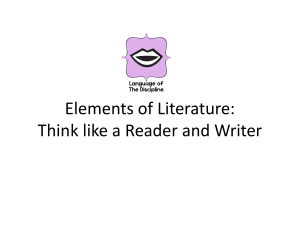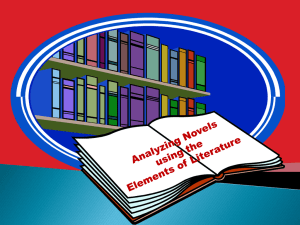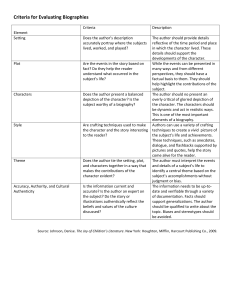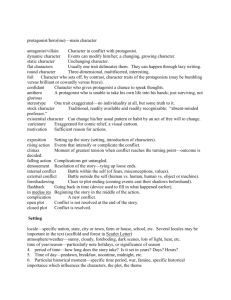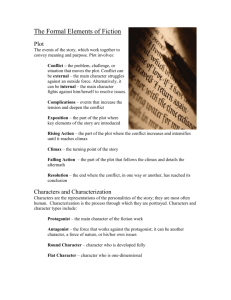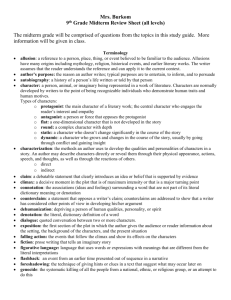September 2009 Mr. R. Windorf SEVENTH GRADE READING Some
advertisement
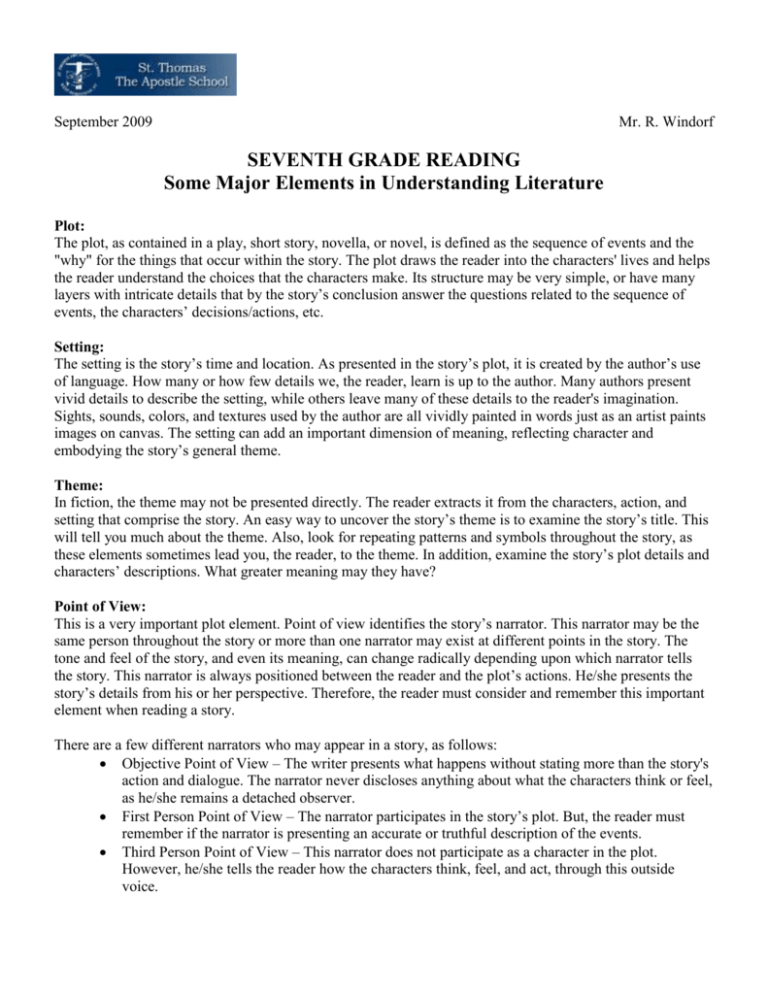
September 2009 Mr. R. Windorf SEVENTH GRADE READING Some Major Elements in Understanding Literature Plot: The plot, as contained in a play, short story, novella, or novel, is defined as the sequence of events and the "why" for the things that occur within the story. The plot draws the reader into the characters' lives and helps the reader understand the choices that the characters make. Its structure may be very simple, or have many layers with intricate details that by the story’s conclusion answer the questions related to the sequence of events, the characters’ decisions/actions, etc. Setting: The setting is the story’s time and location. As presented in the story’s plot, it is created by the author’s use of language. How many or how few details we, the reader, learn is up to the author. Many authors present vivid details to describe the setting, while others leave many of these details to the reader's imagination. Sights, sounds, colors, and textures used by the author are all vividly painted in words just as an artist paints images on canvas. The setting can add an important dimension of meaning, reflecting character and embodying the story’s general theme. Theme: In fiction, the theme may not be presented directly. The reader extracts it from the characters, action, and setting that comprise the story. An easy way to uncover the story’s theme is to examine the story’s title. This will tell you much about the theme. Also, look for repeating patterns and symbols throughout the story, as these elements sometimes lead you, the reader, to the theme. In addition, examine the story’s plot details and characters’ descriptions. What greater meaning may they have? Point of View: This is a very important plot element. Point of view identifies the story’s narrator. This narrator may be the same person throughout the story or more than one narrator may exist at different points in the story. The tone and feel of the story, and even its meaning, can change radically depending upon which narrator tells the story. This narrator is always positioned between the reader and the plot’s actions. He/she presents the story’s details from his or her perspective. Therefore, the reader must consider and remember this important element when reading a story. There are a few different narrators who may appear in a story, as follows: Objective Point of View – The writer presents what happens without stating more than the story's action and dialogue. The narrator never discloses anything about what the characters think or feel, as he/she remains a detached observer. First Person Point of View – The narrator participates in the story’s plot. But, the reader must remember if the narrator is presenting an accurate or truthful description of the events. Third Person Point of View – This narrator does not participate as a character in the plot. However, he/she tells the reader how the characters think, feel, and act, through this outside voice. Page Two Freytag’s Pyramid: In 1863, the German writer, Gustav Freytag, published his famous book on dramatic structure. He believed that a dramatic presentation (which can be applied to a short story, a novel, a play, a movie or T.V. screenplay, or a narrative poem) can be divided into five important parts, or acts: Exposition – This includes the plot’s basic information needed to understand the story, e.g., the protagonist (the main character), the antagonist (the protagonist’s rival), the basic conflict, the setting, etc. Rising Action – During a story’s rising action (building plot elements), the basic conflict is complicated by the introduction of related secondary conflicts, including various obstacles that frustrate the protagonist’s attempt to reach his/her goal. Climax (or Turning Point) – This part of the story marks a change for the protagonist, for the better or the worse. If the story is a comedy, events will have gone badly for the protagonist up to this point. Now, things will begin to go well for him/her. If the story is a tragedy, the opposite may occur, with events turning from good to bad for the protagonist. Falling Action – This is when the conflict between the protagonist and the antagonist unravels, with the protagonist winning or losing. The falling action might contain a moment of final suspense, during which the final outcome of the conflict is in doubt. Resolution (Dénouement) – The comedy story concludes with the protagonist being better off than at the story’s beginning. The tragedy ends with a catastrophe in which the protagonist is worse off than at the beginning of the narrative. Character(s): The character(s) in a short story, novel, play, etc., is (are) its actors who carry-out the actions. The character(s) has a distinct personality and physical descriptions that add to the reader’s understanding of his/her purpose within the story’s plot.

